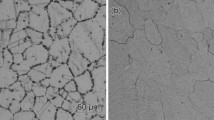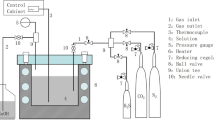Abstract
The impact mechanism of environmental factors, such as corrosive atmosphere, on connector materials was investigated, and the porosity of gold plating was tested. Series of inspections and analytical research methods were introduced in this article. The surface morphology of specimens after corrosion was observed by stereoscopic microscope and scanning electron microscope. Chemical constitution was examined by X-ray energy spectrum. The contact resistances were measured by four-point method. The experiment results show that after exposure to certain environment, the corrosion products, such as Cu2O, Cu(NO3)2·3H2O, and NiO, are observed on the surface of the specimens without gold coatings, whereas the corrosion products appear to have circle-shaped spots on gold-plating surface after corrosion test, which indicate that the gold plating has good corrosion protection. The porosity is increased with the increase of corrosion time for every kind of specimens gold plated, and the corrosion degree of gold-plating specimens is decreased with the increase of the thickness of gold coatings. The static contact resistances of circle-shaped spots appear higher contact resistance than normal value, which can reach to 2,000 mΩ nearly. It is found that the high and unstable contact resistance of the pore and products is more likely to cause contact failure.







Similar content being viewed by others
References
Zou ZL, Li N, Li DY. Corrosion protection properties of vanadium films formed on zinc surfaces. Rare Met. 2011;30(2):146.
Lin XY, Zhang JG. Natural corrosion and electrical contact property of gold plating on contacts. Electron Compon Mater. 2001;120(4):11.
Flowers GT, Xie F. Vibration testing of fretting corrosion in electrical connectors subjected to multi-frequency and random spectral profiles. In: Proceedings of the 49th IEEE Holm Conference on Electrical Contacts, 2003. 45.
He ZP, Xu LJ. Micro motion at the failed contact interfaces. In: Proceedings of the 51st IEEE Holm Conference on Electric Contacts, vol 9; 2005. 180.
Walker MJ, Berman D, Nordquist C. Electrical contact resistance and device lifetime measurements of Au–RuO2-based RF MEMS exposed to hydrocarbons in vacuum and nitrogen environments. Tribol Lett. 2011;44(3):305.
Hartlieb PJ, Roskowski A, Davis RF. Chemical, electrical, and structural properties of Ni/Au contacts on chemical vapor cleaned p-type GaN. J Appl Phys. 2002;91(11):9151.
Cho H, Hwang DY. A study on the development of environment-friendly Ag–SnO2 electric contact materials through a powder metallurgy. Mater Sci Forum. 2006;539(3):2761.
Cetin H, Ayyıldız E. Electrical characteristics of Au, Al, Cu/n-InP Schottky contacts formed on chemically cleaned and air-exposed n-InP surface. Orig Res Artic Phys. B: Condens Matter. 2007;394(1):93.
Wei XF, Wang RC, Feng Y. Microstructural evolution of Au–Sn solder prepared by laminate rolling during annealing process. Rare Met. 2011;30(6):627.
Kang KH, Penkov OV, Kim HJ. Effectiveness of bubble structure in contact damage reduction of Au film. Tribol Int. 2012;55(12):40.
Lian YP, Zhen W, Tai ZG. Cloud point extraction and flame atomic absorption spectrometry analysis of palladium, platinum, and gold ions from industrial polluted soil. Rare Met. 2012;31(5):512.
Coutu J, Ronald A, Reid JR. Microswitches with sputtered Au, AuPd, Au-on-AuPt, and AuPtCu alloy electric contacts. IEEE Trans Compon Packag Technol. 2006;29(2):341.
Alberti A, Badal P, Pellegrino G. Structural and electrical characterization of silicided Ni/Au contacts formed at low temperature on p-type [001] silicon. J Appl Phys. 2011;110(12):15.
Bhaskar RM, Janard HV, Ashok KA. Rapid thermal annealing effects on electrical and structural properties of Pd/Au Schottky contacts to n-type InP(111). Physica Status Solidi (A) Appl Mater Sci. 2009;206(2):250.
Jaetych E, Chocyk D, Budzynski M. Surface morphology and local magnetic properties of electrode posited thin layers. Appl Surf Sci. 2001;180(8):246.
Sun AC, Moffat HK, Enos DG. Pore corrosion model for gold-plated copper contacts. In: Proceedings of the Annual Holm Conference on Electrical Contacts, Chicago, 2005. 232.
Lin XY, Zhang JG. Natural corrosion and electrical contact property of gold plating on contacts. Electron Compon Mater. 2001;21(4):11.
Acknowledgments
This study was financially supported by the Chinese Universities Scientific Fund (No.2011RC0603).
Author information
Authors and Affiliations
Corresponding author
Rights and permissions
About this article
Cite this article
Kong, ZG., Xu, LJ. Morphology and electrical contact properties of electrical connection materials in corrosive atmosphere. Rare Met. 32, 174–178 (2013). https://doi.org/10.1007/s12598-013-0032-2
Received:
Revised:
Accepted:
Published:
Issue Date:
DOI: https://doi.org/10.1007/s12598-013-0032-2




